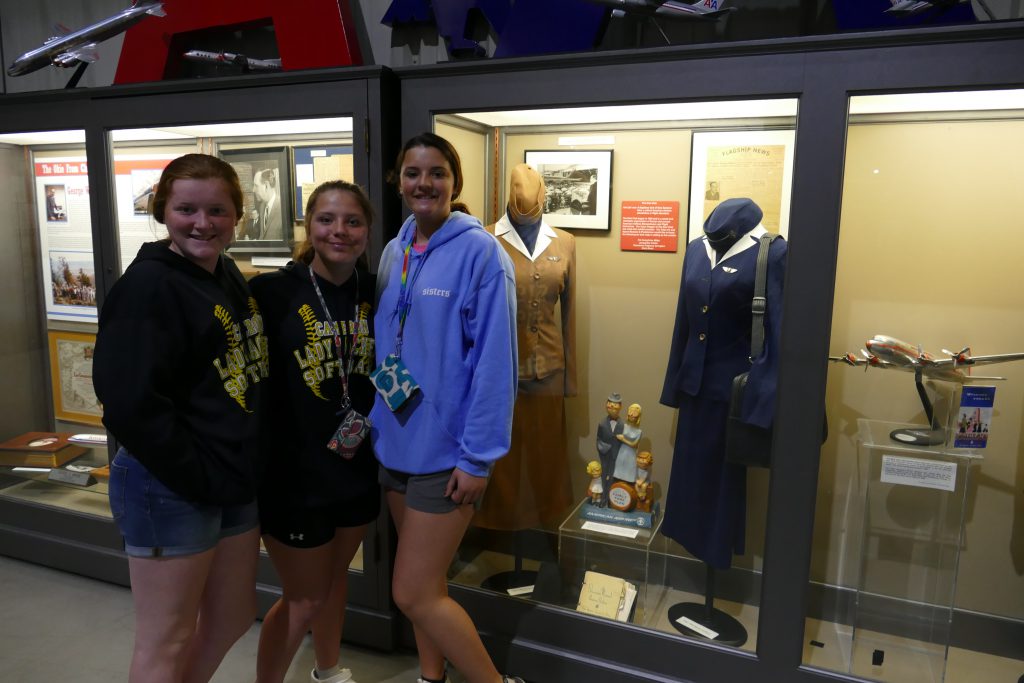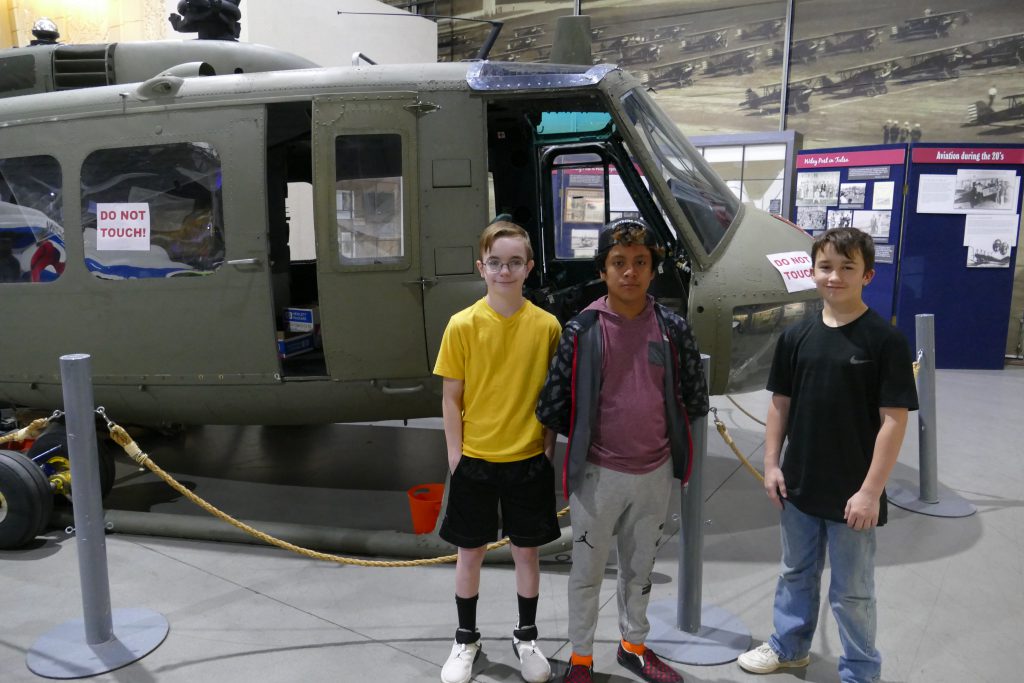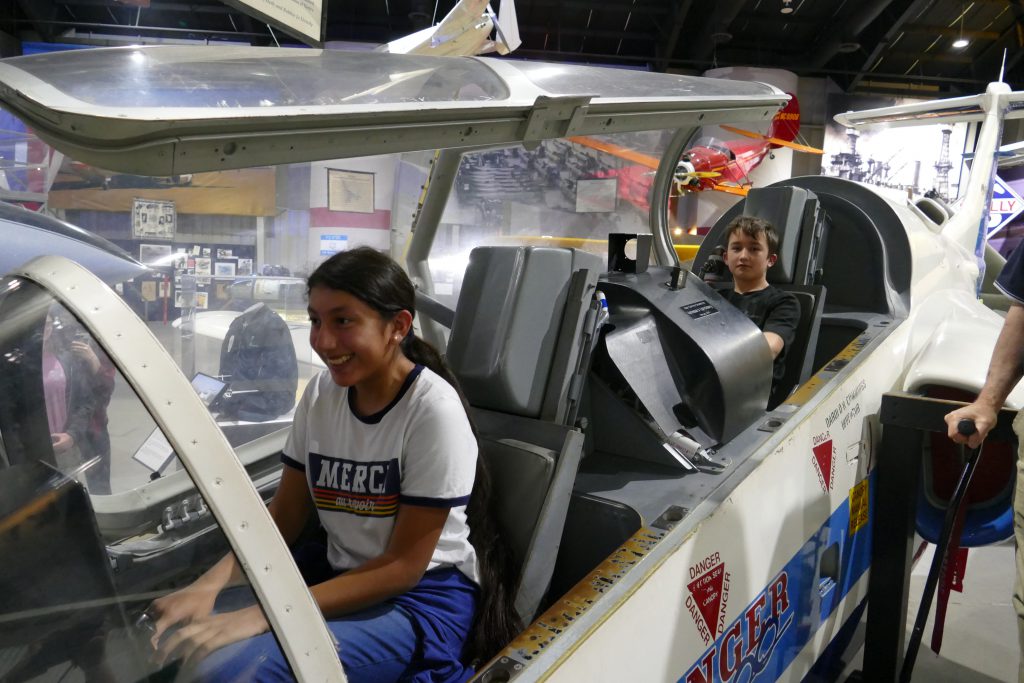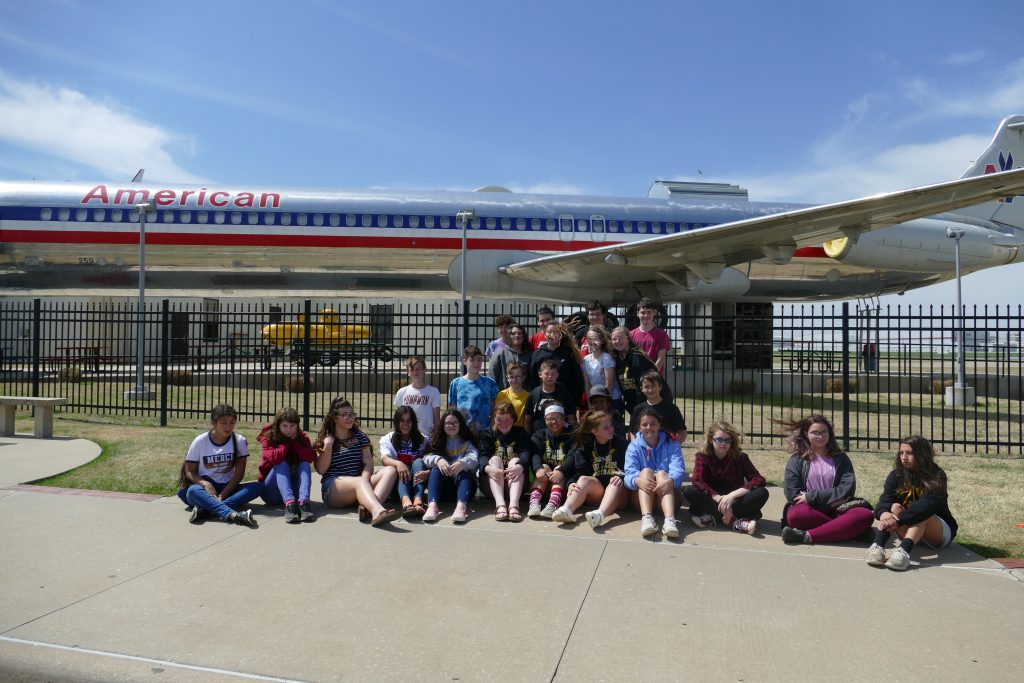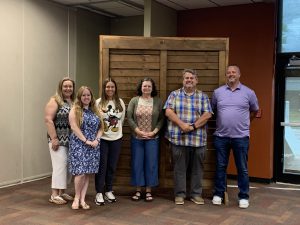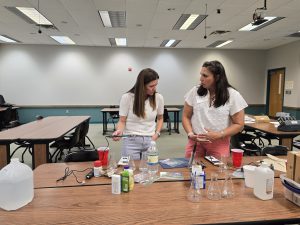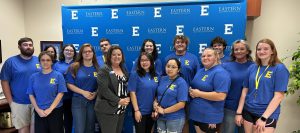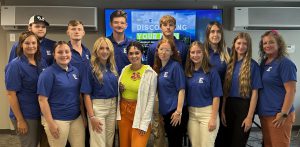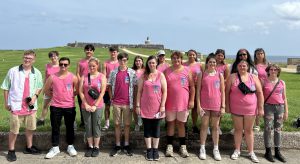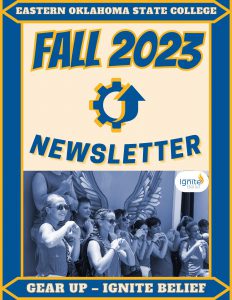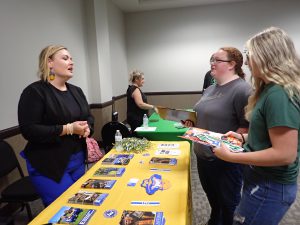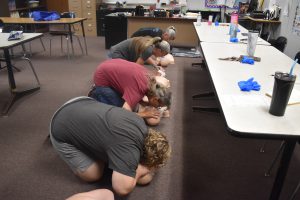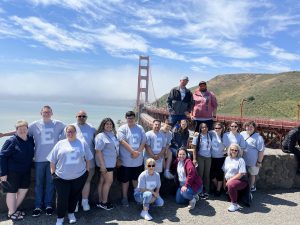Twenty-six Cameron GEAR UP students recently traveled to The Tulsa Air and Space Museum & Planetarium. Upon arrival, students were greeted by volunteer and Vietnam Veteran Doug Hill. The first stop was a hot air balloon display. Originally called smoke balloons, Hill explained that the balloons were once made of canvas and sealed with beeswax to seal the pores of the fabric. The balloon was inflated from heat of a nearby fire which was covered by metal to contain the heat and smoke as it traveled down a covered trench and up into the balloon to inflate it. Once inflated, the balloon would rise, but eventually sank down to earth because there was no heat source attached.
The next exhibit was a UH-1 “Huey” helicopter. This helicopter was used during the Vietnam War as a utility helicopter. Hill told students that he served as a mechanic in Vietnam working on these helicopters. The Huey was used to transport soldiers into battle as well as transport the wounded. In addition to transporting people, they were also used to bring in food, water, and supplies to troops.
Students then walked to the planetarium to watch the presentation “Black Holes.” This high-definition show provided a visual experience of what a black hole may look like. Students learned black holes are so dense, not even light can escape their gravity. Black holes form when large stars die and explode, called a supernova. In an interesting coincidence, the Event Horizon Telescope released the first captured image and visual evidence of a black hole around the time students learned about them on their field trip.
“The Tulsa Air and Space Museum is a great resource for students right here in Oklahoma to learn about aviation history and science,” said GEAR UP Education Coordinator Leslie Hemphill.
The field trip was sponsored by Eastern Oklahoma State College GEAR UP. Participating schools take two field trips each academic year—one to tour a college or university and one that is cultural/educational in nature. In 2017, Eastern received a $17 million federal GEAR UP grant and serves over 3,000 students in 39 area schools for seven years.

